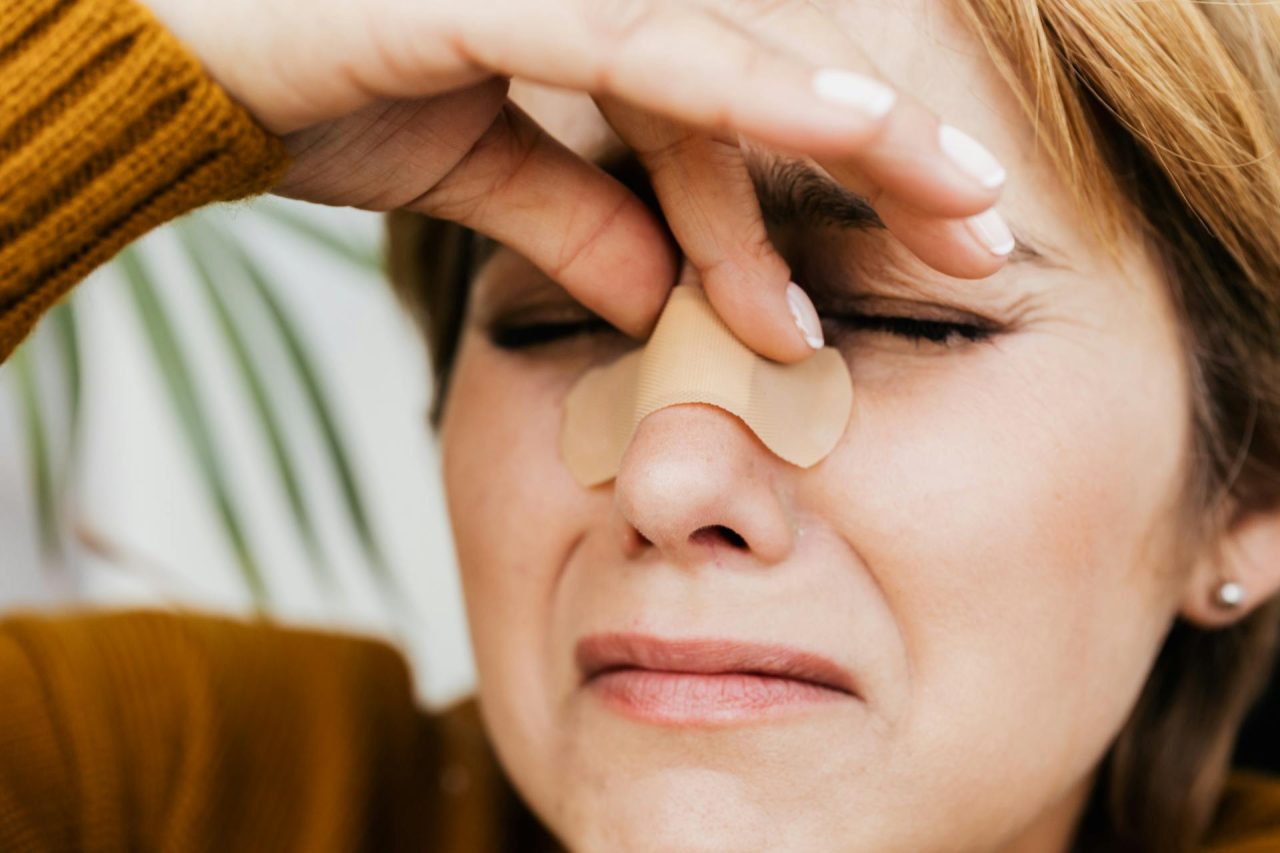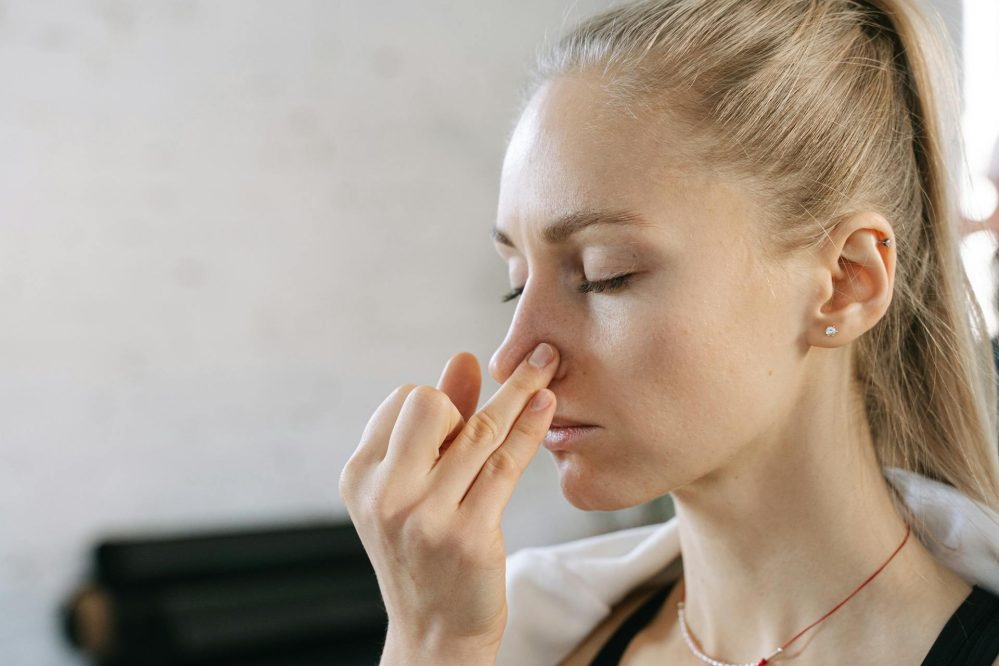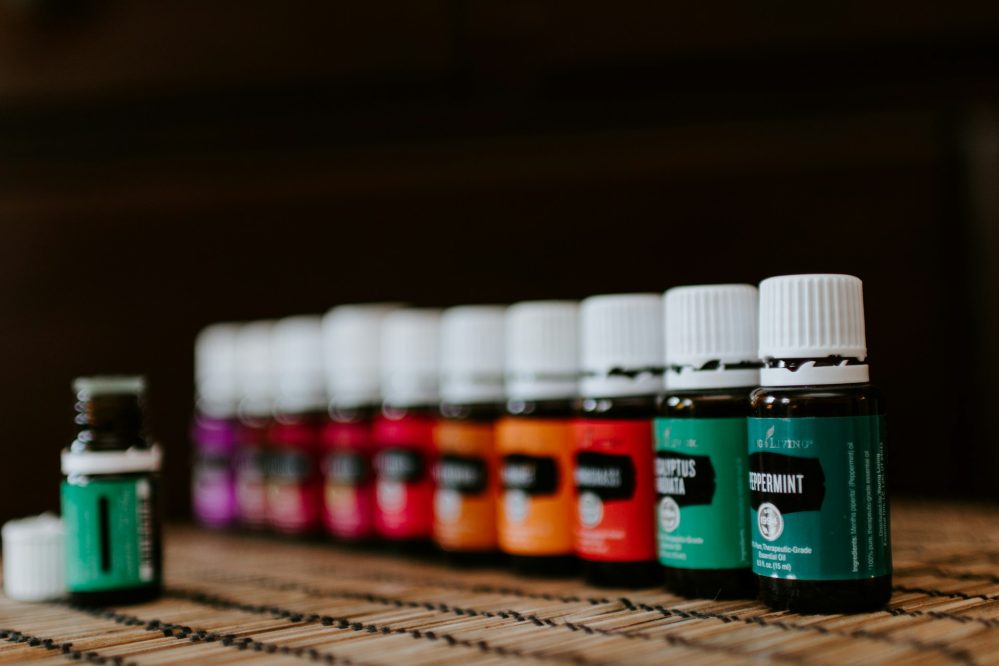The sinuses play a crucial role in keeping your body healthy by producing a thin layer of mucus that constantly drains through your nasal passages. This mucus helps trap and expel dust, germs, and other invaders, keeping your respiratory system clear and functioning smoothly. However, when something goes wrong with your sinuses, they fail to perform this essential function and can become a source of significant pain and discomfort. This is where sinus massage comes into play, offering a natural method to relieve that pain. In the following sections, we will explore tips on performing these massages and their benefits.
What Is Sinus Pain?
Sinus pain is a discomfort or aching sensation felt in the sinus areas, often resulting from inflammation or infection. The sinuses are air-filled spaces within the bones of the face and skull that connect to the nasal cavity. When these passages become inflamed or blocked, usually due to conditions like sinusitis, allergies, a deviated septum, or upper respiratory infections, it can lead to significant discomfort.
Some of the most common symptoms that indicate sinus problems include:
— Facial pain and pressure around the eyes, forehead, and cheeks;
— Headache, particularly in the morning due to mucus buildup overnight;
— Difficulty breathing through the nose due to mucus or swelling;
— Postnasal drip, specifically mucus dripping down the throat;
— Reduced sense of smell and taste;
— Toothache, especially pain in the upper teeth or jaw.
Sinus pain can significantly affect daily life, making concentrating or performing routine activities difficult. The constant discomfort and disruption it causes can lead to fatigue and irritability. It can also affect sleep quality, leading to further health issues.
3 Sinus Massage Techniques to Relieve Pressure

Effective treatments for sinus pain can include medications like decongestants and antihistamines, nasal irrigation, lifestyle changes to reduce allergen exposure, and, in some cases, surgical interventions. However, natural methods like facial massage can also help manage and alleviate the pain. Below, we’ll explore three massage options tackling specific sinus pressure points that can help ease pressure and discomfort.
1. Frontal Sinus Massage
To perform this massage, follow these steps:
1. Locate the frontal sinuses.
They are situated on the forehead above the eyes. Finding the precise location of the sinuses helps target the massage correctly, ensuring that pressure is applied where it is most needed to relieve congestion and discomfort.
2. Use your index and middle fingers to gently press on your forehead.
Using your index and middle fingers allows you to apply consistent and controlled pressure, which is crucial for an effective massage. Gentle pressing prepares the area for deeper massage movements.
3. Apply gentle pressure and use small, circular motions to massage the area for about 30 seconds to 1 minute.
The circular motion helps stimulate blood flow and encourages the movement of mucus, reducing congestion. Gentle pressure ensures the massage is soothing rather than painful, helping to relax the muscles and relieve tension.
4. Gradually move your fingers towards the temples, continuing the circular motion.
Moving towards the temples helps spread the massage’s effects over a larger area, providing comprehensive relief from sinus pressure. The continued circular motion ensures that the entire frontal sinus area is treated.
Frontal sinus massage can effectively relieve pressure and pain in the forehead, making it a simple yet powerful technique for managing sinus discomfort. The massage helps promote mucus drainage, reducing congestion and the associated symptoms. Additionally, it can help lessen headaches often linked to sinus issues, providing a natural and soothing method for relief.
However, it’s important to keep in mind these precautions to ensure the massage is safe and effective:
— Avoid applying too much pressure to prevent discomfort or injury.
— If you experience increased pain or dizziness, stop the massage and consult a healthcare professional.
2. Maxillary Sinus Massage

Follow these steps to perform this massage:
1. Locate the maxillary sinuses in the cheekbones on either side of the nose.
Identifying the maxillary sinuses ensures you focus the massage where it will be most effective in reducing sinus pressure and facilitating mucus drainage.
2. Place your index and middle fingers on your cheeks, just below your eyes.
Positioning your fingers below the eyes aligns them with the maxillary sinuses, allowing you to apply targeted pressure directly to the affected area.
3. Apply gentle pressure and use circular motions to massage the area for about 1-2 minutes.
Circular motions enhance circulation and help move stagnant mucus, reducing congestion. Gentle pressure prevents discomfort and provides relaxation.
4. Move your fingers towards the nose and then out towards the ears, maintaining the circular motion.
This movement pattern addresses the entire maxillary sinus area, promoting thorough drainage and relief from pressure. It also helps distribute the massage’s effects evenly.
Maxillary sinus massage is highly effective in easing pressure and congestion in the cheeks, making it particularly useful for those experiencing facial pain or toothaches related to sinus issues. The technique helps facilitate mucus drainage, thereby reducing sinus congestion. Using a warm compress before the massage can further enhance these benefits by loosening mucus and reducing swelling.
For the best results, make sure:
— Your hands are clean to avoid introducing bacteria into your nasal passages.
— To be gentle to prevent bruising or skin irritation.
3. Sphenoid/Ethmoid Sinus Massage
Here are the steps to perform this massage:
1. Find the sphenoid and ethmoid sinuses.
They are deeper within the skull, behind the nose, and between the eyes. Locating these sinuses is crucial for effectively targeting the massage, as these areas are often associated with deep-seated pain and pressure that can be difficult to reach.
2. Use your thumbs or index fingers to feel around the area on either side of the bridge of your nose, just below the brow bone.
This positioning allows you to apply pressure to the deeper sinus areas, helping to reach the sphenoid and ethmoid sinuses.
3. Apply gentle pressure and use small, circular motions to massage for about 1-2 minutes.
Small, circular motions help stimulate blood flow and encourage mucus movement in these deeper sinuses. Gentle pressure ensures that the massage does not cause discomfort or injury.
4. Move your fingers outward towards the temples, maintaining the circular motion.
Moving outward helps to cover a larger area and ensures the entire region around the sphenoid and ethmoid sinuses is treated, promoting comprehensive relief from sinus pain and pressure.
Massaging the sphenoid and ethmoid sinuses can significantly alleviate deep-seated sinus pain and pressure. This technique also helps relieve headaches and eye strain often associated with sinus issues.
When performing a sphenoid/ethmoid sinus massage, it’s important to:
— Be cautious if you have a history of sinus infections or any structural nasal issues.
— Avoid it if you have had recent nasal surgery or trauma.
— Stop immediately and seek medical advice if you experience sharp pain or dizziness.
Optional Sinus Massage Tips
To help you get the most out of your sinus massages and maintain optimal sinus health, consider incorporating the following tips:
Use essential oils

Essential oils can enhance the benefits of sinus massages by providing additional relief from congestion and promoting relaxation. Some recommended oils for such massages include eucalyptus, peppermint, and lavender.
To use essential oils, dilute a few drops in a carrier oil like coconut or almond oil and gently massage into the sinus areas.
Hydrate
Hydration is crucial for maintaining healthy sinuses, as it helps to thin mucus and promote proper drainage. Drinking plenty of water throughout the day is essential, especially before and after massage sessions. Additionally, herbal teas, broths, and foods with high water content can contribute to your overall hydration.
Staying hydrated not only supports sinus health but also enhances the effectiveness of sinus massages by ensuring mucus remains thin and less likely to cause blockages.
Nasal rinse
Performing a nasal rinse with sinus massages can significantly improve sinus health. Nasal rinsing helps clear out mucus, allergens, and irritants from the nasal passages, providing a clean slate for your massage.
To perform a nasal rinse:
— Use a saline solution and a neti pot or a squeeze bottle.
— Tilt your head to one side over a sink, insert the spout into the upper nostril, and gently pour the solution through your nasal passages.
— Repeat on the other side.
— Always use distilled, sterile, or previously boiled water to ensure safety.
Frequency
For those experiencing acute sinus issues, daily massages can provide significant relief. Once symptoms subside, continuing with massages two to three times a week can help maintain sinus health and prevent future congestion.
Is Relief Long-Lasting?
Generally, sinus massage can offer immediate, temporary relief from pain and pressure. For some, the effects may last for several hours, while others might experience relief that persists throughout the day.
The duration of relief provided by sinus massage techniques can vary depending on several factors, including the underlying cause of the sinus issues, the frequency of the massages, and the individual’s overall health. Moreover, the elements mentioned earlier (hydration, essential oils, and combining massage with other treatments) can enhance and prolong the effectiveness of sinus massages. Consistent practice and addressing underlying conditions are key to achieving longer-lasting relief.
The Bottom Line
Incorporating sinus massages into your daily routine can be a powerful, natural way to combat sinus discomfort and improve your overall respiratory health. These techniques offer a quick and easy approach to managing sinus issues.
If you frequently suffer from sinus pain and pressure, why not give one of these massages a try and experience the relief for yourself? Remember, taking care of your sinuses is not just about easing discomfort—it’s about enhancing your quality of life. So, give your sinuses the treatment they deserve, and you’ll find that every breath is a breath of fresh air.
Frequently Asked Questions (FAQs)
What causes sinus problems?
Sinus problems can be caused by various factors, including infections (viral, bacterial, or fungal), allergies, nasal polyps, a deviated septum, or environmental irritants like pollution and smoke.
Is it good to massage your sinuses?
Definitely! Massaging your sinuses can help relieve congestion, reduce pain and pressure, and promote better mucus drainage, providing a natural method for managing sinus discomfort.
What pressure points drain sinuses?
Key pressure points for draining sinuses include the area between your eyebrows, the sides of your nose just below the bridge, and the points on either side of your nostrils.
How do you clear a sinus?
To clear a sinus, you can try nasal irrigation with a saline solution, applying warm compresses, staying hydrated, using a humidifier, or performing sinus massages to promote drainage and relieve congestion.